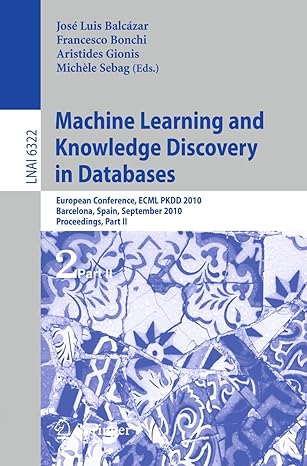Question
PLZ help me with this in Python!! Our goal is to compare linear and binary search efficiency for a general search scenario, i.e., search a
PLZ help me with this in Python!!
Our goal is to compare linear and binary search efficiency for a general search scenario, i.e., search a list of integers from another list of integers. We can implement the search using a function search(list target, list source) - it searches each of the integers in list target in another list named list source. For instance, search([1,3], [1,5,6]) means searching for 1 in [1,5,6] and searching for 3 in [1,5,6]. If the length of list target equals 1, it means searching for one integer in a list. We know that when using linear search, searching for a value from n values will require an average of n/2 comparisons, while in the worst case, searching for a value that is not in the list will require n comparisons. Searching for any value will require an average of logn comparisons when using binary search. However, before applying binary search, you should sort the list source once and then perform several searches, and sorting the list will take O(nlogn) time. If we are doing a very small number of searches, linear search is preferable. However, if we are doing many searches of the same list, binary search is preferable since the time required to sort the list once is more than offset by the reduced time for the searches. This is what complexity theory tells us. Your task is to conduct experiments to explore the relationship between the size of the list and the number of searches required to make binary search preferable to linear search. See the detailed requirement below:
1) Implement two algorithms for the general search scenario using Python. You must write your own code for binary search and linear search. For the sorting algorithm, you may choose any sorting algorithm that has complexity in O(nlogn). If your sorting code is modified from an online resource, you need to add a reference in the comment.
2) For n = 100, 1000, and 10,000, conduct the following experiment:
- Use Python library random to create a list named list source containing n integers, with seed = 12345. You can call random.seed(12345) to control the seed value.
- Choose k target values to form list target, make sure 50% of the values in list target are in list source and the rest 50% are not in list source. You can round the number up if 50% * k does not result in a integer.
- Use binary search and linear search separately to search list target in list source. Note, when recording the time for the binary search algorithm, you must include the time for sorting the list source once.
- Design and conduct experiments to determine the approximate smallest value of k for which binary search becomes faster than linear search. This means you should try different k values, starting from a small one, and increase it until you observe that the binary search method is faster than the linear search method.
- Provide a short description in your written report (the pdf file) on how you generate the list source and list target, how you determine the smallest value of k, and what is the smallest value of k you find. Hint: When generating the list source, you can use random.sample(range(0, m), n) to generate n random values in the range of 0 to m. When generating list target, you can randomly pick 50% of the k values from the list source, and then randomly generate the rest values in a range that does not overlap with 0 to m. For instance, you can generate integers larger than m or smaller than 0. There could be other methods as well. You do not need to follow this hint.
Step by Step Solution
There are 3 Steps involved in it
Step: 1

Get Instant Access to Expert-Tailored Solutions
See step-by-step solutions with expert insights and AI powered tools for academic success
Step: 2

Step: 3

Ace Your Homework with AI
Get the answers you need in no time with our AI-driven, step-by-step assistance
Get Started


